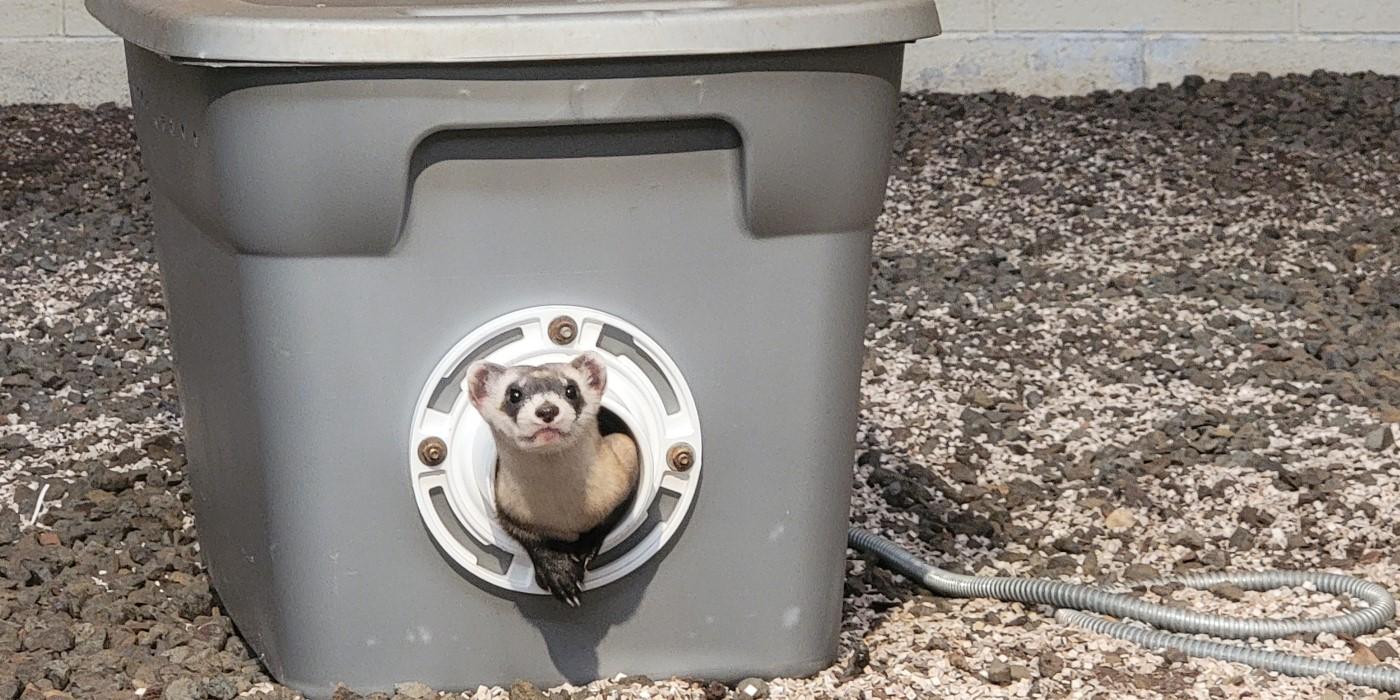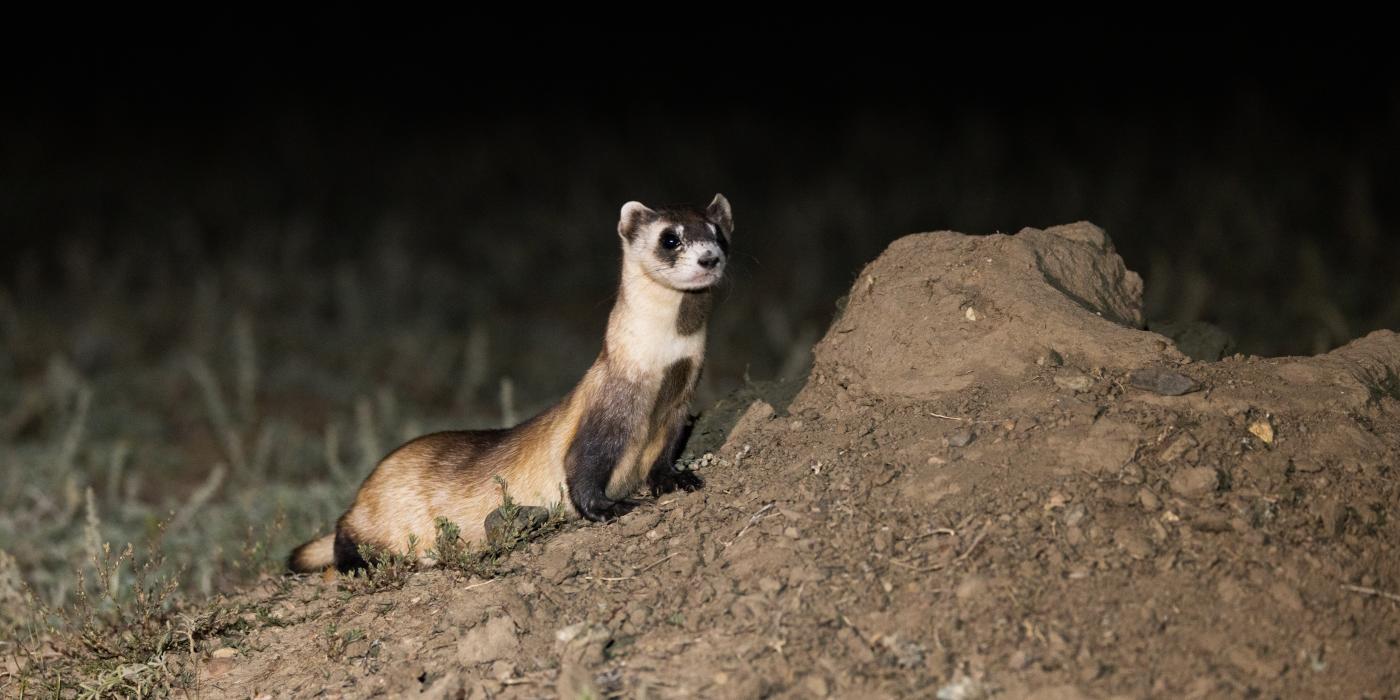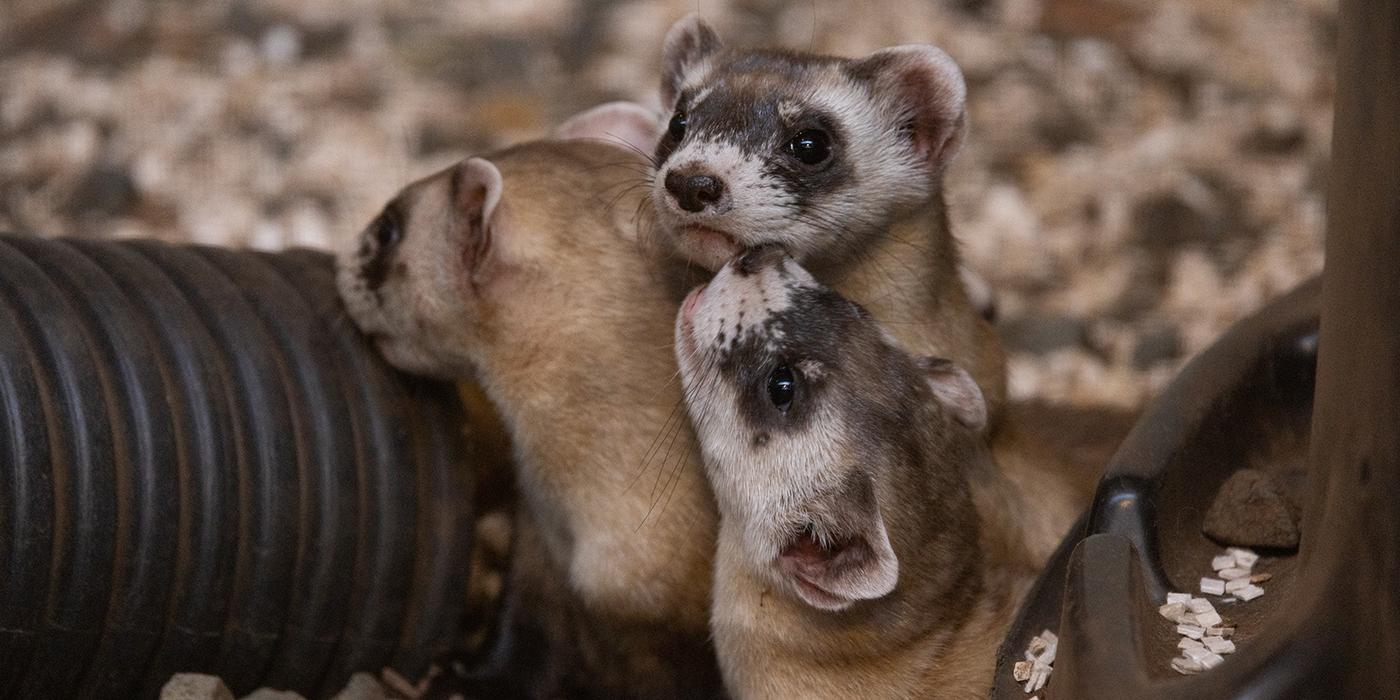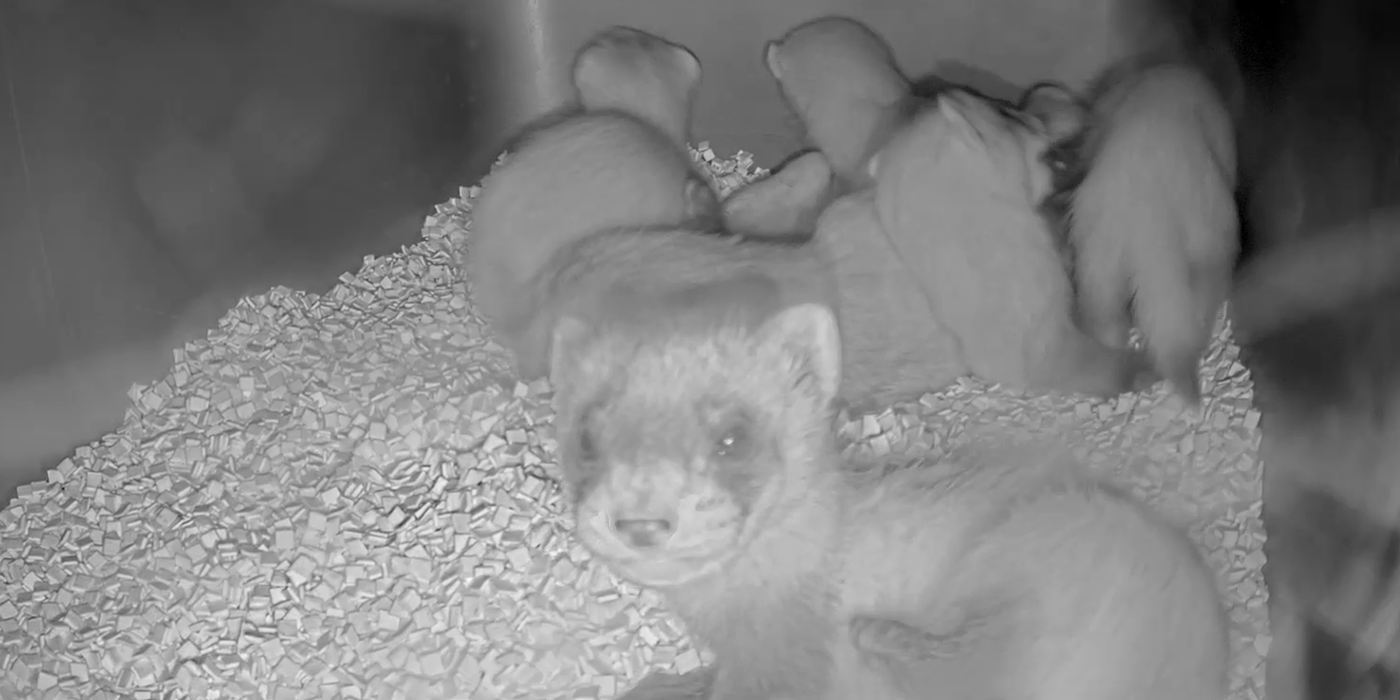New Destinations Ahead for the Ferrets
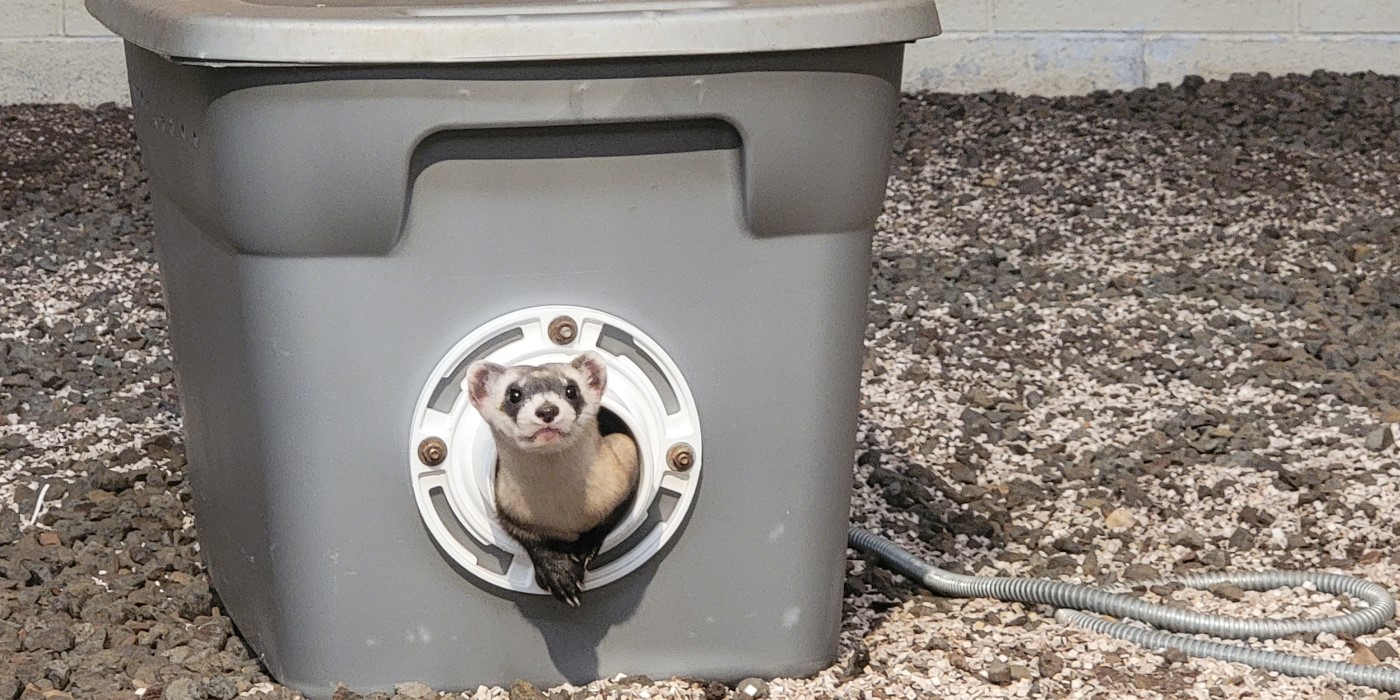
Each August, the Smithsonian Conservation Biology Institute’s Paul Marinari leads the Black-footed Ferret Species Survival Plan, or SSP, to assess the entire black-footed ferret population in human care and determine where the ferrets should go next: to the wild or a breeding center!
But first, an update on the kits…
The males, Aspen and Swifty, are now bigger than sister Aster and even mom Potpie! The best way to tell them apart is by their head shape and where the dark patch of fur is on their lower abdomen. The males have wider and rounder heads, while the females have more pointed, elongated faces. Aster has a tiny, thin line of dark fur on her lower abdomen, while her brothers have a wider patch of dark fur. Potpie still has pronounced nipples.
Aster, Aspen and Swifty are spending more time in their large enclosure and interacting with enrichment, such as flowerpots, shredded paper, and of course, live rats. Now with their adult teeth fully grown in, we have seen the kits’ hunting skills significantly improve. We try to place rats where Potpie won’t expect them, including under flowerpots and in PVC tubes, to increase the kits’ opportunity to catch them. There have even been a few occasions where the kits have gotten to the rat before Potpie!
As mentioned in this update, ferrets that are released into the wild need to know how to hunt live prey, particularly prairie dogs. We provide the live rats to start the preconditioning process for the kits.
Each year a group of keepers and scientists update the Black-footed Ferret SSP. Working together, they determine which ferrets should breed and which should be released into the wild. Adult ferrets are evaluated differently than kits.
For an adult ferret, the working group considers age and health. A black-footed ferret must be at least 3 years old if female, or 4 years old if male, to be considered for reintroduction. It’s important to the SSP to maintain the same amount of 1-, 2- and 3-year-old ferrets, because they make up the core of the breeding population in human care. The health of the ferret is considered next. All reintroduction candidates need to have good eyesight and teeth so they can be successful hunters.
For a kit to be considered a good candidate for reintroduction, it of course needs to be healthy, but the most important factor is kinship. Kits who have a lot of relatives in the breeding population, known as “high kinship,” are reintroduction candidates. Those with low kinship, or those who do not have many relatives, stay in human care for breeding. It’s important to keep a wide gene pool so this endangered species has the best chance for survival.
So where will this year’s Black-footed Ferret Cam stars be going? [Drumroll, please…]
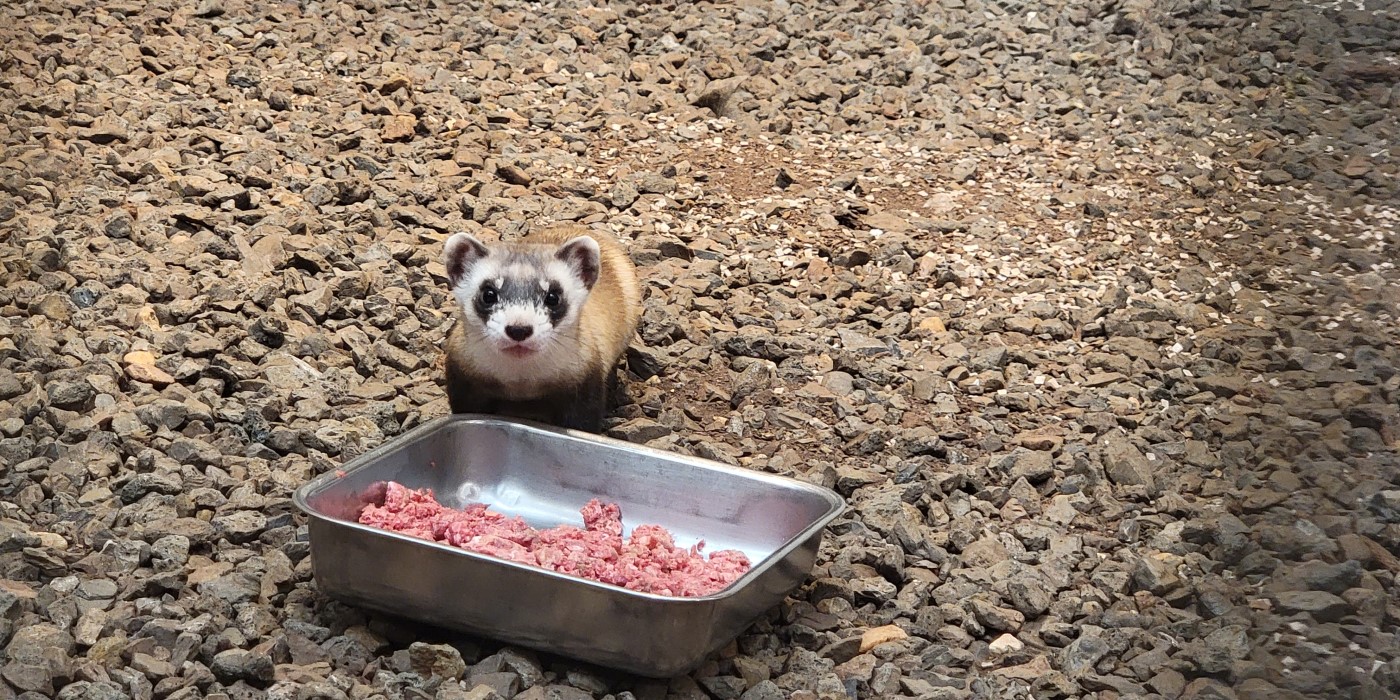
Aster, Aspen and Swifty have low kinship, so they will all be staying in the breeding program!
And, surprise: Potpie meets the requirements for adult ferrets and is on the reintroduction path!At this age and with their paths set, it’s time for Potpie and the kits to go their separate ways. On Tuesday, August 31, the Black-footed Ferret Cam will be turned off. Be sure to tune into the webcam for your last chance to watch Aspen, Swifty, Aster and Potpie! Plus, stay tuned to find out which breeding center each kit will go to!
Falling for our black-footed ferrets? Catch up on Potpie and her kits in the previous black-footed ferret updates!
Related Species:

